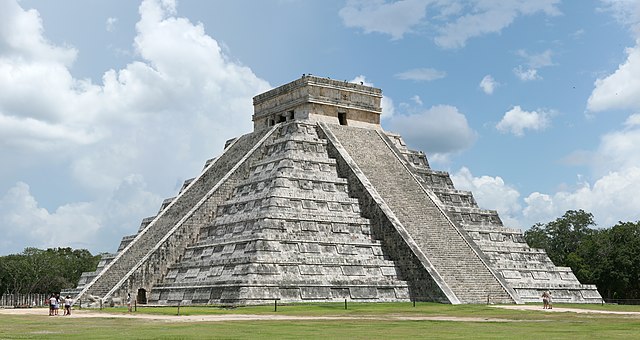Quiriguá (Spanish pronunciation: [kiɾiˈɣwa]) is an ancient Maya archaeological site in the department of Izabal in south-eastern Guatemala. It is a medium-sized site covering approximately 3 square kilometres (1.2 sq mi) along the lower Motagua River, with the ceremonial center about 1 km (0.6 mi) from the north bank. During the Maya Classic Period (AD 200–900), Quiriguá was situated at the juncture of several important trade routes. The site was occupied by 200, construction on the acropolis had begun by about 550, and an explosion of grander construction started in the 8th century. All construction had halted by about 850, except for a brief period of reoccupation in the Early Postclassic (c. 900 – c. 1200). Quiriguá shares its architectural and sculptural styles with the nearby Classic Period city of Copán, with whose history it is closely entwined.
Stela D, north side, from Quiriguá, representing king K'ak' Tiliw Chan Yopaat
Stela from Quiriguá depicting a queen trampling a captive, ca 653, MUNAE, Guatemala City
Stela C, south face, representing K'ak' Tiliw Chan Yopaat
Altar M, dating to 734. It has been identified variously as feline, a crocodile, and a snake. It may be a three-dimensional representation of a rare toponymic glyph.
The Maya civilization was a Mesoamerican civilization that existed from antiquity to the early modern period. It is known by its ancient temples and glyphs (script). The Maya script is the most sophisticated and highly developed writing system in the pre-Columbian Americas. The civilization is also noted for its art, architecture, mathematics, calendar, and astronomical system.
El Castillo, at Chichen Itza
Detail of Lintel 26 from Yaxchilan
Stela D from Quiriguá, representing king Kʼakʼ Tiliw Chan Yopaat
Calakmul was one of the most important Classic period cities.







